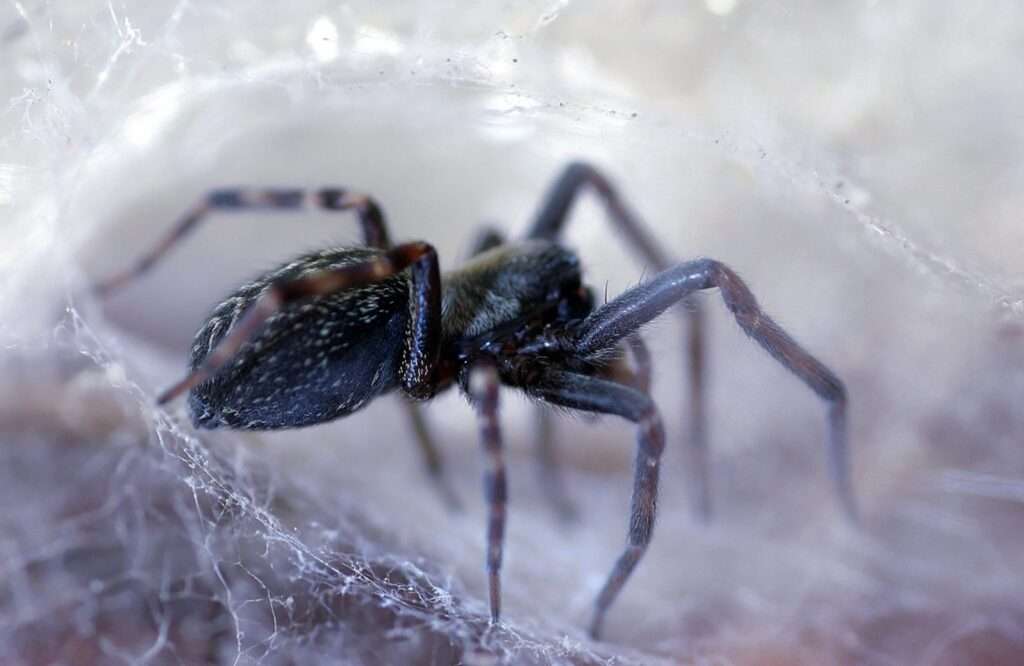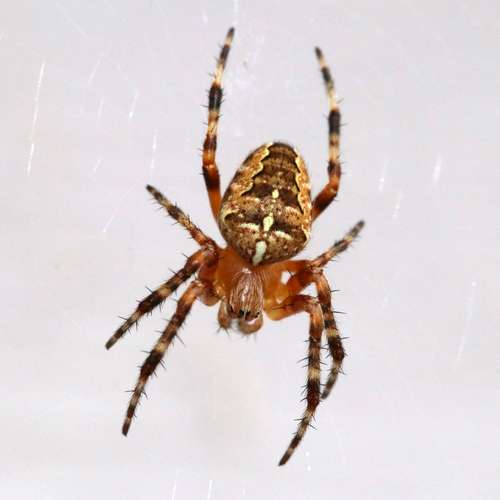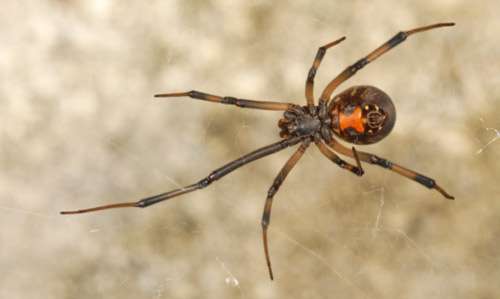
A typical species of cribellate Australian spider that was brought to Japan and New Zealand is the black house spider, often known as the common black spider (Badumna insignis). The gray house spider, a closely related species with a similar range, Badumna longinqua, has also been introduced to the Americas.
Habitat
B. insignis was brought to New Zealand and Japan despite being an Australian native. It is commonly available in Australia and New Zealand. In their native habitat, they are typically found on trees with rough bark, whereas indoors, they are frequently located in corners, around windows and doorways, or in other places where other light sources can attract prey insects. Although it may be found in comparable places, the related B. longinqua is more frequently seen outside.
Morphology
Dark and strong, B. insignis is a spider. The female’s maximum height is 18 mm, and her legs-pan is 30 mm. Male spiders tend to be smaller (10 mm) and have longer legs relative to their body size than females. The abdomen is charcoal gray, with a dorsal pattern of bright markings that are occasionally obscure, and a dense covering of fine, velvety hair in both sexes. The carapace and legs are dark brown to black. B. longinqua has significantly larger (14 mm) legs and a grayish carapace.
Food and Feeding Habits
In the wild, Badumna insignis is particularly common on trees with hard bark because it offers good cover for its retreats behind the fissures in the bark. The sap that leaks from wood-boring bug holes attracts prospective prey including flies, beetles, butterflies, and bees that could become hooked in the delicate edges of the web. This makes wood-boring insect-attacked trees very desirable. Black House Spiders prey on insects such as moths, beetles, and termites that are drawn to the light of windows and lamps at night and are found around houses.

Bite
Although venomous, black house spiders are not regarded as hazardous. They are fearful, and they don’t often bite. The bite could be quite painful and result in localized edoema. On rare occasions, patients report experiencing giddiness, sweating, nausea, and vomiting. After numerous bites, skin lesions (arachnogenic necrosis) have occasionally appeared.
Are they harmful?
Risk to humans
Because black house spiders are fearful creatures, they rarely bite humans. The bite could be very painful and result in minor local edoema. On rare occasions, patients report experiencing giddiness, sweating, nausea, and vomiting. After several bites, skin sores have occasionally appeared.
Things to Consider When Keeping as Pet
Substrate
Peat moss works well for a substrate.
Housing
Black house spiders can be found hiding in or beneath rocks, sticks, bark, paper, toilet paper rolls, plants, fake plants, and leaf litter, among other things.
Diet
They will consume pretty much anything they can kill, but some examples include crickets, earwigs, grub worms, flies, and a great deal more.
Feeding
Ideally, you should feed them once every two weeks or more frequently.
Water
The majority of the water they consume comes from the bugs.
Decoration
Decor is not required. However, you may also use moss, bark, and sticks.
Temperature
No problem at room temperature.
Table





